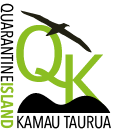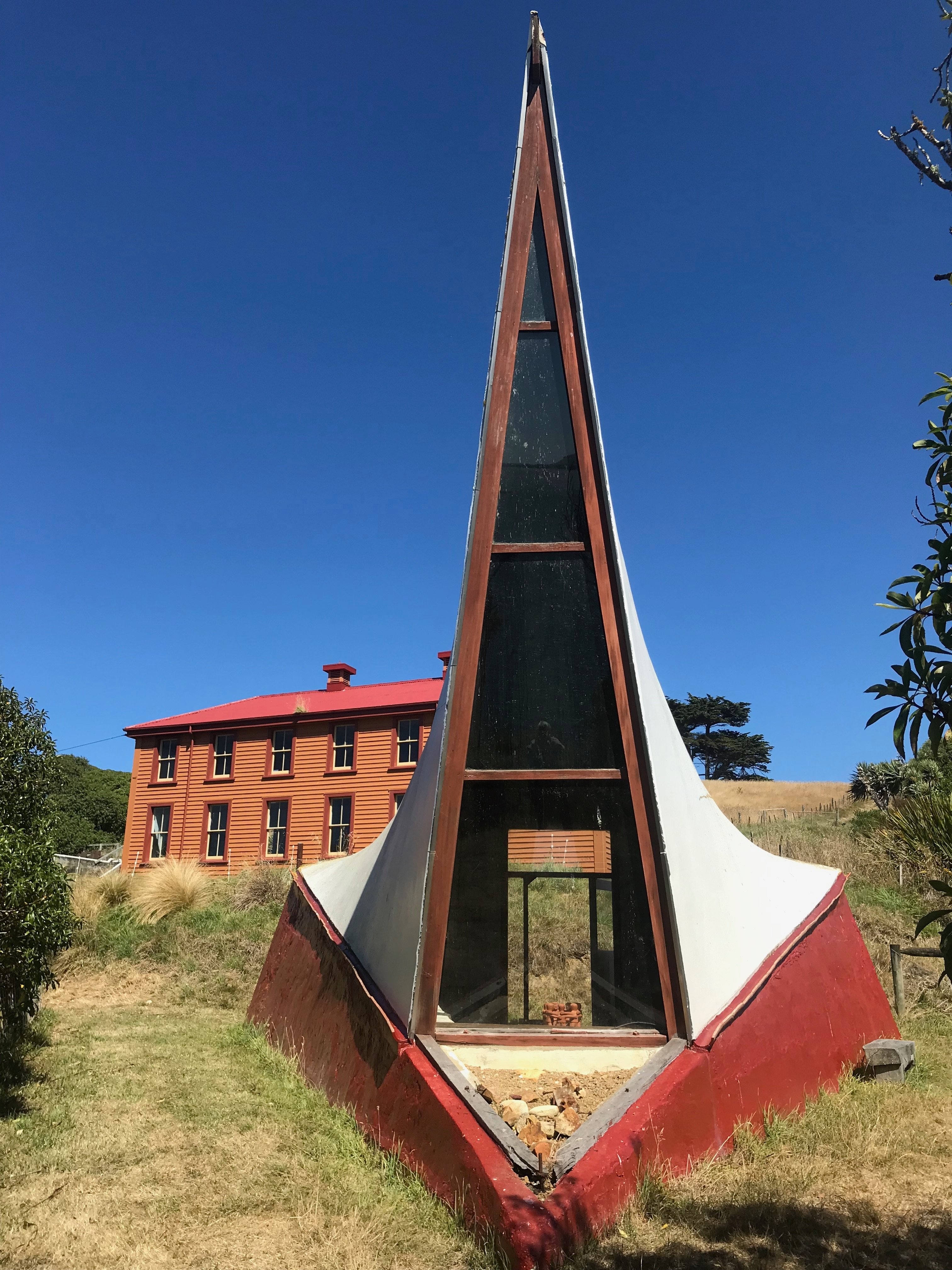Our charity helps care for the Island, protecting and enhancing its ecology and heritage, its simplicity and peacefulness. We welcome others from the wider community to visit and to get involved.
The Island lies within the takiwa of Te Runaka ō Otakou and their mana whenua is recognised. All the buildings and structures are owned by our Charity and the Island managed under a ‘Community agreement’ with DOC.
1. Ecological Restoration
We have many ecological projects that are restoring the Island’s biodiversity. The Island was once completely bush-clad, but the forest was cut down to make way for quarantine buildings and farming. One of our projects is to re-establish diverse native vegetation over much of the Island. Gradually we are replanting the steeper slopes or fencing them off from stock to allow passive restoration. We are planting seedlings endemic to the area, and also raise seeds in our shadehouse.
We control weeds and mammalian pests, as this also supports biodiversity.
Click here to find out more about how you can get involved.
Little Shags/kawau paka nest on the Island, especially on the side facing Portobello, below the Lodge and Cottage. Otago shags/kawau roost on the other side of the Island, on the rocks above Nichols Passage. This is a recovering sub-type of Stewart Island shag. White-fronted terns/tara have started nesting at the jetty below the Lodge since about 2018 and southern black-backed gulls/karoro, and oystercatchers/Tōrea also find nesting sites around the island.
2. Heritage
Quarantine Island/Kamau Taurua is listed as a Historic Area with Heritage NZ (List No. 7503 7 December 2001). While all the Island is listed, there are 8 recorded specific archaeological sites: the shipwrecks – Oreti and Waikana, the wharf and causeway, remains of the flagpole, foundations of the first and second hospitals, the cemetery, the Quarantine Station, and midden exposures. Quarantine Station buildings include the Married Quarters building; the original Keeper’s cottage (now called the St Martin Lodge); the remains of the two hospitals, notably the brick chimney of the second hospital; the dining room and kitchen area and an ablutions block.
The Community seek to honour the history of the Island, both Maori and European, and to share this with visitors. A major project, taking over 20 years, has been to save and restore the Married Quarters Building (1873).
Work has also been done to protect the hospital chimney from further deterioration, and to minimise moisture in the rammed-earth chapel.
Projects are ongoing to improve interpretation, including the island’s significance to Ngai Tahu; and to update our website, trail maps and visitor guides.
3. Sustainability
The Community values the concept of sustainability. We try to ensure that the residents and visitors on the Island follow the guidelines established by the NZ Sustainable Households project supported by the Ministry for the Environment.
The Community also hopes at some stage to install appropriate solar and wind energy equipment, partly to encourage interest in these technologies by allowing visitors to use them, as well as to improve our own energy management.
Wherever possible, the Community purchases goods which are produced using sustainably managed resources.
Hear an interview with Francine Vella ‘Sustainable Living on Quarantine Island ‘ on ‘Eco living in action’ 6/8/2015.
4. Social Justice
The Community work as a group, or as individuals, or with other groups to promote social justice.
Refugee Support
As part of an ongoing commitment to support people facing disadvantage, we have hosted some groups from refugee backgrounds for short holidays and visits on the Island.
Opposition to Deep-sea Oil prospecting
The Community has joined the nation-wide campaign saying ‘no’ to drilling for fossil fuels. There are many reasons. Shell, Anadarko and the other fossil fuel companies already have enough discovered reserves on their books to push global warming to five times beyond two degrees – the so-called ‘safe’ limit that world governments have agreed to. Beyond two degrees the climate will become increasingly unstable.
We know we are very dependent on fossil fuels now; this needs to change for the good of future generations – we seek to reduce our own carbon footprint and call for investment in a low carbon economy. This is where we want to see job creation; not in a dead end industry. Deep sea drilling also poses grave risks to our beautiful environment, industries, and quality of life.
Message to Anadarko from Peter Matheson from a protest boat (2014, President).
5. Spirituality
Nature and people have always been very important to us. Openness to others, social justice and a closeness to the earth underpin the spirituality of the community. Incorporated in 1958 as the ‘St Martin Island Community Inc’ as a Christian Community with the motto “Work and Worship”, we have expanded to accept and embrace many beliefs and cultures and welcome the stimulation and growth they bring to the community.
There is much warmth, humour, sharing and support in the times we come together, whether for meals, meetings, community work times or spiritual retreats. Our love of the Island and our desire to live in a peaceful community is expressed in our belief that our work together is love and mindfulness in action.
The Island Community was initially named in honour of St Martin of Tours, a colourful 4th century French bishop, who taught by example that work and worship belong together and who was known for his piety, kindness, his emphasis on work and worship, and his outreach in establishing new communities.
The name used for over 50 years ‘St Martin’ lives on in the renamed ‘St Martin Lodge’. The community was renamed ‘Quarantine Island/Kamau Taurua Community (Incorporated)’ in 2015.

